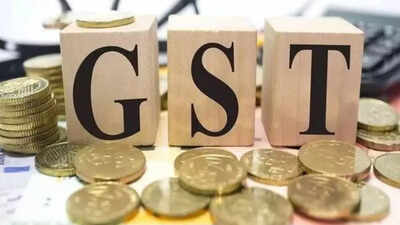ARTICLE AD BOX

The Goods and Services Tax (GST) Council, chaired by Union finance minister Nirmala Sitharaman, on Wednesday announced the most extensive revamp of the indirect tax system since its rollout in 2017.The reform introduces a simplified two-slab structure of 5% and 18%, alongside a new 40% slab for luxury and sin goods.The new rates, except for tobacco where cess continues, take effect from September 22, the first day of Navratri.Revenue secretary Arvind Shrivastava estimated the net fiscal implication of the changes at Rs 48,000 crore. He added the measures are designed to spur consumption and improve compliance.Sitharaman underlined that the reforms were aimed at the common man, stating, “Every tax levied on common man’s daily use items have undergone a rigorous look, and in most cases, the rates have come down drastically”.
Cars
Buyers of small cars stand to benefit the most. Small cars will now attract 18% GST, reduced from the earlier 29% (28% plus 1% cess).For GST purposes, small cars are defined as petrol, LPG or CNG vehicles with an engine capacity of up to 1200 cc and length up to 4000 mm.
In the case of diesel cars, the definition covers vehicles with engine capacity up to 1500 cc and length not exceeding 4000 mm.Large vehicles exceeding 1500 cc or longer than 4000 mm will fall into the new 40% GST slab.The same rate will also apply to all utility vehicles, including SUVs, MUVs, MPVs and cross-over vehicles, provided they have an engine capacity above 1500 cc, a length over 4000 mm, and a ground clearance of 170 mm or more.Unlike the earlier regime that combined 28% GST with a 17–22% cess, the new framework consolidates this into a single 40% rate without cess.
Bikes
Two-wheelers have also seen a rationalisation. Motorcycles up to 350 cc engine capacity will attract 18% GST, reduced from 28%. The 18% rate also applies to 350 cc models.Motorcycles exceeding 350 cc engine capacity have been placed in the 40% bracket, aligning them with the treatment of luxury and high-powered vehicles.This change is expected to encourage mass-market two-wheeler sales, especially in rural and urban middle-class markets, while continuing to tax premium motorcycles at a higher rate.
Electric Vehicles
Electric cars remain unchanged, continuing to be taxed at 5%.
Health Insurance
A major relief comes for individuals purchasing life and health insurance.
T
hese policies will now be exempt from GST. Earlier, these services attracted 18%, adding to premium costs.Exemption is expected to make policies more affordable, widening insurance coverage in a country where penetration levels remain low.
Cigarettes and tobacco
The GST Council has shifted cigarettes, cigars, pan masala, and chewing tobacco into the 40% slab. However, until compensation cess loans are fully repaid, the existing 28% GST plus cess regime will continue.Analysts noted that revenue neutrality is a priority for the government, as cigarette taxation contributes significantly to exchequer inflows.
The move balances public health concerns with the need to curb illicit trade.
Alcohol
Alcohol remains outside the purview of GST altogether. It continues to be taxed separately through state excise duties, meaning the GST overhaul has no bearing on alcohol pricing.States will retain autonomy in setting alcohol taxes, a key revenue source for their budgets.
Gold
There has been no change in the taxation of precious metals.
G
old and silver jewellery remain taxed at 3%, with an additional 5% GST on making charges.
Gold bars and coins also continue to face 3% GST.With no direct impact from GST 2.0, demand in the bullion market is expected to remain steady, especially during the festive season when purchases peak.
Mobile Phones
Despite repeated industry requests, mobile phones remain taxed at 18%.
ET
reported that the India Cellular and Electronics Association (ICEA) had sought a 5% slab, calling the current levy “regressive” and reminding that pre-GST state VAT on mobiles was mostly capped at 5%.Despite the wider rate cuts across consumer goods, mobile phones remain at 18% GST, unchanged under the new regime. As per ET, the India Cellular and Electronics Association (ICEA) had urged for a 5% slab, calling the current levy “regressive.”The industry argued that mobile phones are a basic digital necessity, not a luxury.ICEA highlighted that pre-GST, most states had capped VAT at 5%. With domestic production rising to Rs 5.45 lakh crore in FY25 and exports crossing Rs 2 lakh crore, industry bodies stressed that lower GST would have boosted affordability and domestic demand.



.png)
.png)
.png)
















 2 days ago
3
2 days ago
3







 English (US) ·
English (US) ·